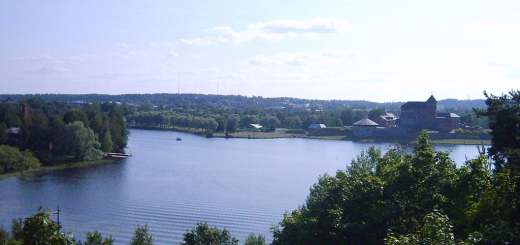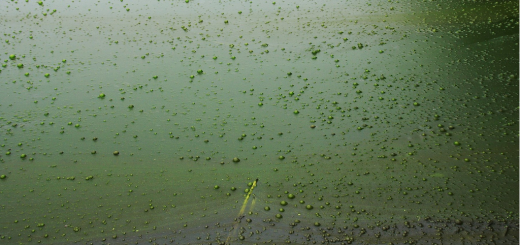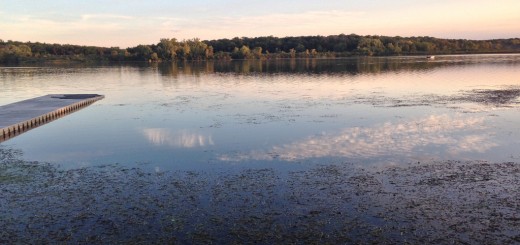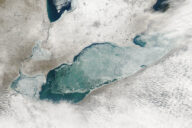Research Summary: Assessment Of Water Use And Reuse Through Reported Data, A U.S. Case Study
01Purdue University, Lyles School of Civil Engineering and Division of Environmental and Ecological Engineering, 550 Stadium Mall Drive, West Lafayette, IN 47907, United States
Increasing demands for freshwater make it necessary to find innovative ways to extend the life of our water resources, and to manage them in a sustainable way. Indirect water reuse plays a role in meeting freshwater demands but there is limited documentation of it. There is a need to analyze its current status for water resources planning and conservation, and for understanding how it potentially impacts human health. However, the fact that data are archived in discrete uncoordinated databases by different state and federal entities, limits the capacity to complete holistic analysis of critical resources at large watershed scales. Humans alter the water cycle for food production, manufacturing, energy production, provision of potable water and recreation. Ecosystems services are affected at watershed scales but there are also global scale impacts from greenhouse gas emissions enabled by access to cooling, processing and irrigation water. To better document these issues and to demonstrate the utility of such an analysis, we studied the Wabash River Watershed located in the U.S. Midwest. Data for water extraction, use, discharge, and river flow were collected, curated and reorganized in order to characterize the water use and reuse within the basin. Indirect water reuse was estimated by comparing treated wastewater discharges with stream flows at selected points within the watershed. Results show that during the low flow months of July–October, wastewater discharges into the Wabash River basin contributed 82 to 121% of the stream flow, demonstrating that the level of water use and unplanned reuse is significant. These results suggest that intentional water reuse for consumptive purposes such as landscape or agricultural irrigation could have substantial ecological impacts by diminishing stream flow during vulnerable low flow periods.
Introduction
The United Nations estimates that 1.8 billion people will be living in countries or areas experiencing water scarcity by 2025, and population growth and climate change will continue to place further stress on freshwater resources, with this occurring with greater frequency and intensity, even in developed countries (UNWater, 2007). In many regions, human activities significantly alter the natural water cycle by extracting surface and ground water, distributing it to different locations, and discharging treated wastewater back to waterways (Vörösmarty and Sahagian, 2000). To address regional water resource management, both water conservation measures and direct or planned water reuse practices may be implemented. However unplanned, undocumented water reuse is intrinsic to the water cycle and is important to understand in the context of water resource management.
As Dean and Lund (1981) remarked over three decades ago the distinction between the various types of water reuse are somewhat arbitrary. However, the use of treated municipal wastewater generally fall into one of three categories: (1) Direct water reuse, where the effluent from one use becomes the influent (with or without further treatment) to another or the same use; (2) planned indirect water reuse, where the wastewater is returned to a specific water supply environment (i.e., aquifer or wetland) which serves as an environmental buffer before it is extracted for reuse; and (3) unplanned indirect water reuse, where the wastewater is returned to the natural environment (i.e., surface water bodies), with the receiving waterway being the source of water for other uses at one or more downstream locations. When the receiving waters become a drinking water supply source, indirect or de facto potable reuse occurs (U.S. Environmental Protection Agency, 2012a; Asano et al., 2007).
Unplanned indirect water reuse occurs in almost all waterways (Asano, 1998; de Vries and Lopez, 2013), yet there is little documentation of the practice. The National Research Council (NRC) Committee on the “Assessment of Water Reuse as an Approach for Meeting Future Water Supply Needs” analyzed the potential for water reclamation and reuse of municipal wastewater in the U.S. to improve water supply alternatives (National Research Council, 2012). They concluded that an analysis of unplanned water reuse is critical for understanding the consequences of implementing new planned water reuse projects. Indeed, in the United States, there are an increasing number of direct water reuse projects, and these practices may influence the amount and quality of water available to support ecosystem services because municipal wastewater and industrial discharges are often major flows within the combined human–natural water cycle.

A graphical abstract of water use. (Credit: Wiener, et al.)
An estimate of the extent that treated municipal wastewater effluent contributes to the potable water supply in the United States was reported in 1980 by the U.S. EPA (Swayne et al., 1980):“20 cities with a total population of more than 7 million were determined to have surface water supplies containing 2.3 to 16% wastewater during average flow conditions and 8 to 350% wastewater during low flow conditions”. An update of that report (Rice et al., 2013) states that there was an increase in de facto water reuse for 17 of the top 25 most impacted drinking water treatment plants identified in 1980. One of the limitations of these studies is that they only considered treated wastewater discharged by Waste Water Treatment Plants (WWTPs) and they did not account for industrial or other wastewater effluents. However, wastewater is de- fined as “Used water discharged from homes, business, industry, and agricultural facilities” (U.S. Environmental Protection Agency, 2012a). Moreover, the de facto water reuse estimation in both cases assumed that the WWTP discharge flows were equal to the plants’ design flow, which is not an accurate assumption, as WWTPs seldom operate at the design capacity. Furthermore, only discharges and not withdrawals were reported, making it impossible to evaluate the entire “human water cycle”.
To provide a more accurate assessment, actual flow data on withdrawals and discharges must be used. For management purposes in the United States, vast amounts of fresh water resources data are collected and archived by local, state, and federal departments and agencies. However, there is little coordination of how these data are collected, organized, or stored, leading to an assortment of many heterogeneous data sets (Averyt et al., 2013a; National Research Council, 2012; Shaffer, 2009). As a result, sophisticated rapid high performance data analysis for resource management is difficult, hindering our ability to holistically manage critical water resources at large watershed scales (e.g., 8, 4, or 2 digit Hydrologic Unit Code (HUC) scales). At a subcontinental scale, the Mississippi River basin comprises an area of almost 3 million km2 , populated by more than 70 million people. Within this watershed the USGS maintains 2479 gauging stations, while the US EPA maintains data on more than 800,000 facilities that discharge treated water into the river. Despite the river’s ecological and economic value there is no integrated knowledge about the quantity of water used or reused within the watershed.
In order to test the feasibility of such integration and analysis, in this research we have collected, curated, and analyzed all water withdrawals and discharges within the Wabash River watershed that have been reported to Federal and State agencies for the 2007 calendar year. The Wabash River watershed was selected for evaluation because it is used for a wide variety of anthropogenic activities, and as a 4-digit HUC watershed, it is an appropriately large sub-basin within the Mississippi River watershed. It is shared by the states of Indiana, Illinois and Ohio, providing some challenges regarding state agency data integration. It is also an example of a water-rich basin, where water use and reuse are not yet of major concern. Data on water withdrawals, wastewater discharges, and stream flow were collected for the year 2007 because the dataset for this year was the most complete at the initiation of this study. Treated wastewater discharge data are reported to the appropriate regulatory agency as monthly averages, thus our analysis is performed on a monthly time interval.
By retrieving data for the entire watershed from multiple sources and curating within one coherent database, we have developed and describe a simple methodology that can be applied to other watersheds where data on water withdrawals, discharges, and stream flow are archived over time. In the final database, each discharge and withdrawal point is associated with its own set of geographic coordinates. As a result, water reuse can be assessed at any scale within the watershed by aggregating all reported data on treated wastewater flows and withdrawals upstream from any point in the watershed. This study shows that in addition to simply collecting data on water availability and use, the appropriate organization and dissemination of these data are necessary to effectively and sustainably manage all available water resources (de Vries and Lopez, 2013; Gleick, 1998; U.S. Department of Energy, 2006).
Full study, including Materials & Methods, Results and Discussion, published under Creative Commons license 4.0 in Science of The Total Environment.
Featured Image: The Wabash River. (Credit: Public Domain)













